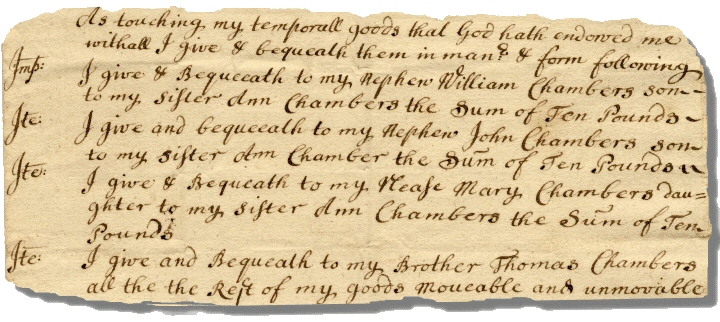Wills and Testaments
(The elements of a will)
The date when the will was made and published is also almost invariably included.

Bequests form the main body of the document, with the testator concluding by nominating her residuary legatee.

Most testators appointed one or more executors, and perhaps also trustees or supervisors, particularly if dependents were left whose freedom to act subsequently might be restricted by their age or sex. Failure to appoint an executor would necessitate the appointment by the court of an administrator and their signing of a will bond.

Pious statements, religious bequests and instructions are also a standard part of a will. Formerly testators were required to bequeath a fixed proportion of their personal estate to the church, usually in the form of mortuaries. Here the testatrix instructs her executor to bury her body in a place chosen at his discretion, so that it might ‘return to its primitive dust’.

 |
Previous page | Next page |  |

